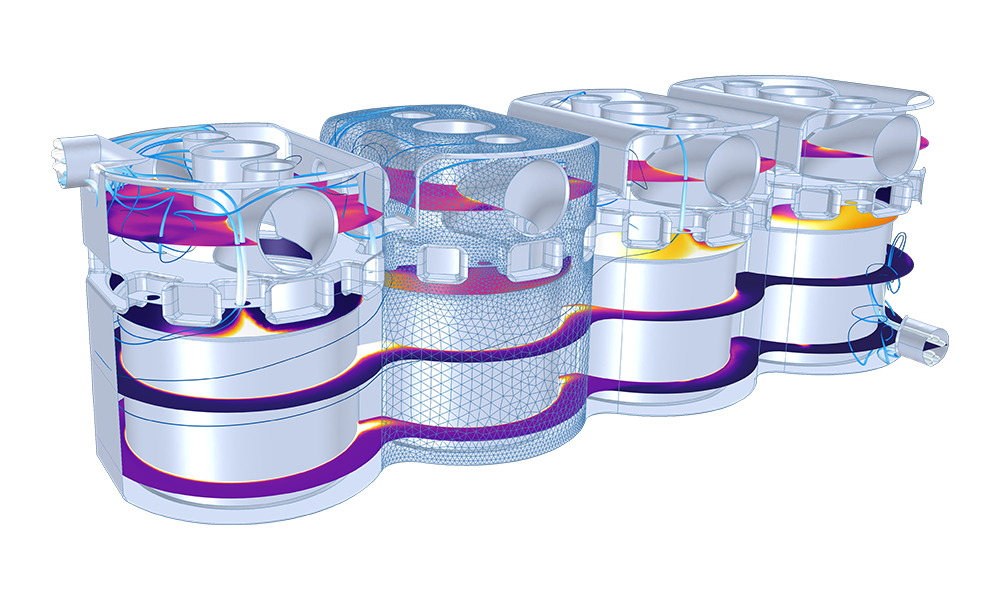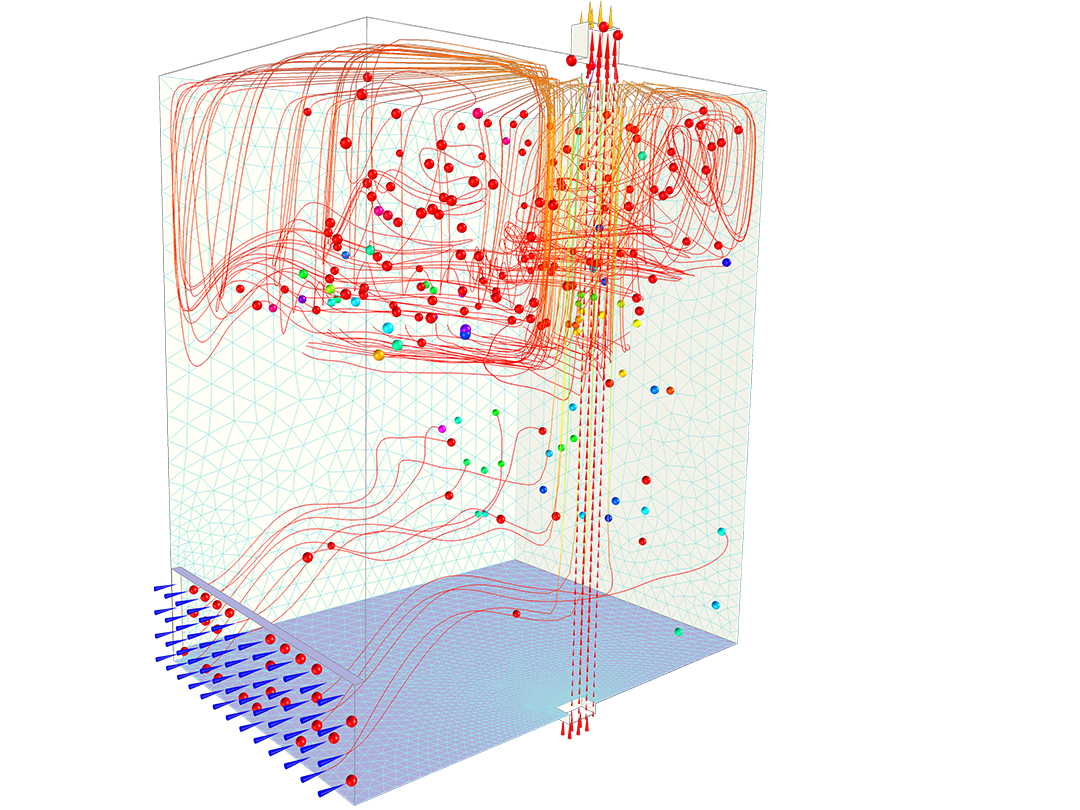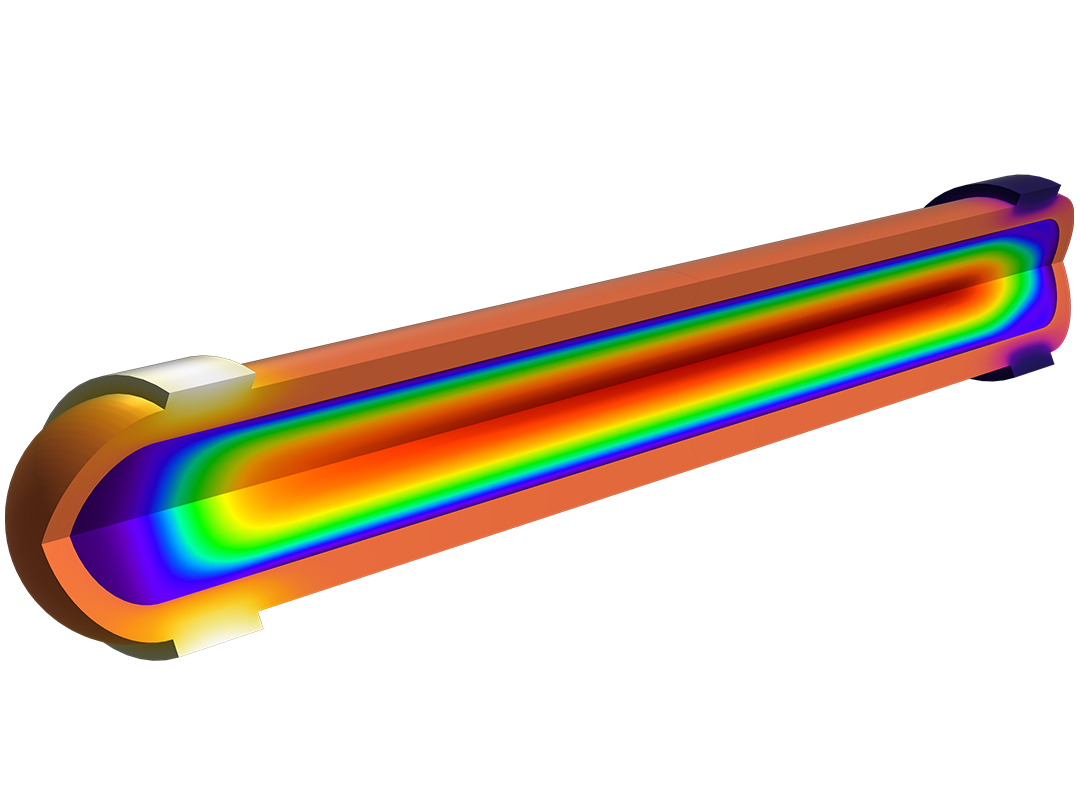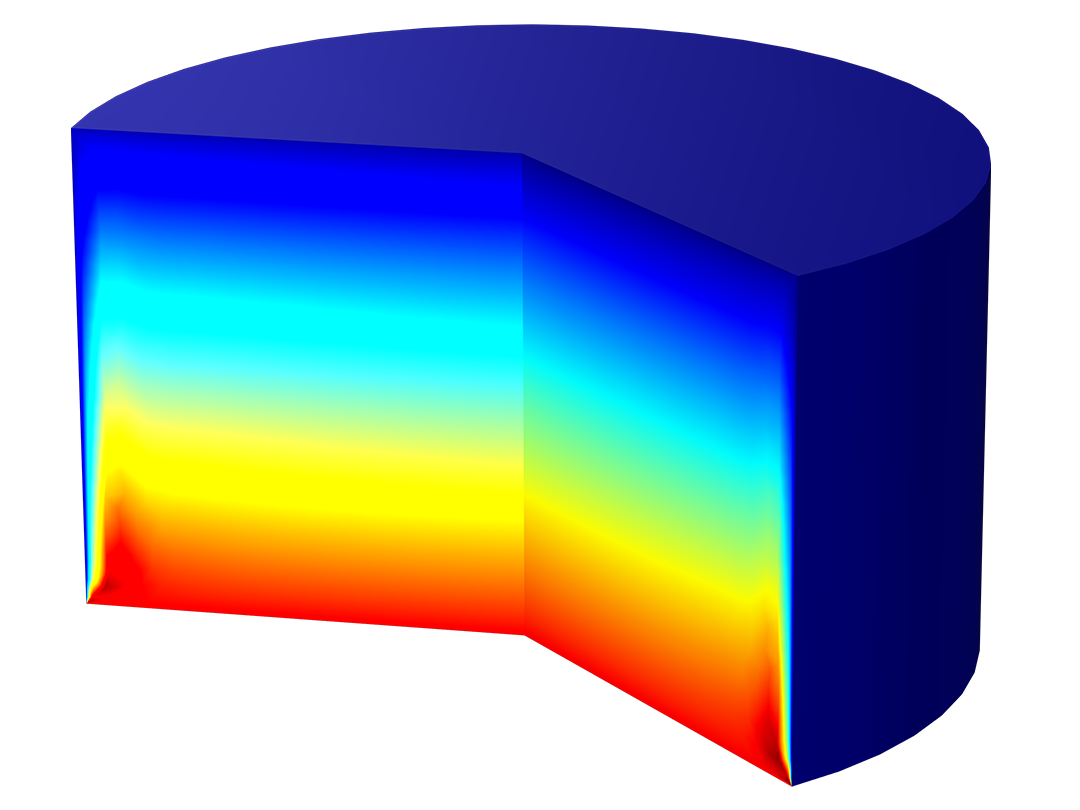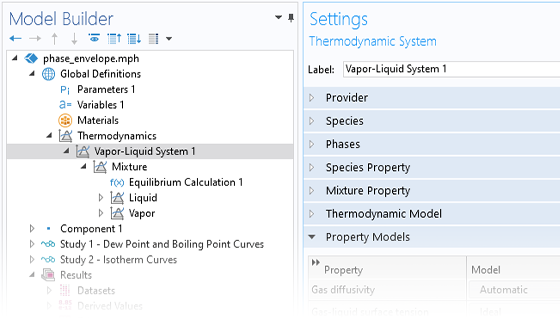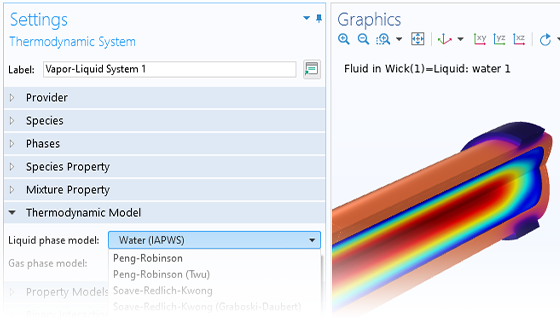Properties for CFD Simulations
The density and viscosity of fluids may depend on composition, pressure, and temperature. Obtaining accurate values for these properties is relevant, and may affect the design of devices and processes. The Liquid & Gas Properties Module gives you the tools to compute density and viscosity for gas mixtures of arbitrary composition. In addition, the module contains property models for liquid solutions, such as for aqueous solutions and solutions with organic solvents. For two-phase flow systems, the module features models to compute the equilibrium composition of the vapor and liquid phases as a function of pressure and temperature.

